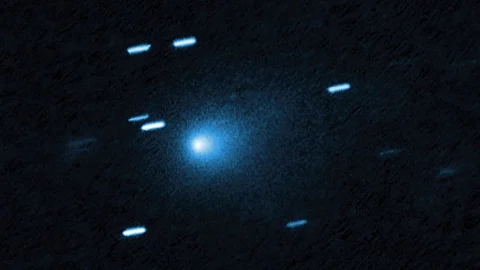
- Home
- Live Blog
- Breaking News
- Top Headlines
- Cities
- NE News
- Sentinel Media
- Sports
- Education
- Jobs

The Hubble Space Telescope has snapped its most detailed image yet of a rare celestial traveller: Comet 3I-Atlas, an interstellar object racing through our solar system at an astonishing 130,000 mph (209,000 kph). The comet, recently discovered by a telescope in Chile, is only the third known interstellar object to pass near Earth.
Released on Thursday by NASA and the European Space Agency, the photo shows a stunning teardrop-shaped cloud of dust surrounding the comet’s core, along with hints of a trailing dusty tail — the classic signature of an active comet.
Though it’s travelling at immense speeds, scientists reassure that 3I-Atlas poses no threat to Earth, skimming past us at a safe distance and passing closer to Mars. When Hubble captured the image, the comet was still 277 million miles (446 million kilometres) from Earth.
Initial estimates suggested the comet’s icy nucleus could be several miles across. However, Hubble’s precision imaging has dramatically revised its size: it's now believed to be no more than 3.5 miles (5.6 kilometres) wide, and possibly as small as 1,000 feet (320 metres).
The visit of 3I-Atlas offers a rare chance for astronomers to study material from beyond our solar system. With just two other known interstellar objects — ‘Oumuamua in 2017 and 2I/Borisov in 2019 — these events are precious opportunities to learn more about the wider galaxy.
As 3I-Atlas continues its high-speed journey through the cosmos, scientists are keeping a close eye — and lens — on one of the universe's rarest visitors.